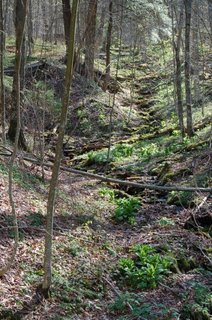
I recently read Cathleen Shine's review, People Who Hurt People. She is writing about Joyce Carol Oates' new anthology, High Lonesome : Stories 1966-2006. This review articulated some aspects of Oates' writing that I had been struggling to understand, and I'm going to save a few quotes here to help in case the review disappears behind the New York Times' firewall. Of course, they may well keep it in their public book review archive section, along with this: (April 30, 2006) First Chapter: 'High Lonesome.'
Review by CATHLEEN SCHINE
Published: April 30, 2006
New York Times Book Review
For those of us who have stood before bookstore shelves lined with Joyce Carol Oates volumes, paralyzed with awe, wondering which of her more than 100 books we should open first, "High Lonesome," a new collection of 36 stories written between 1966 and 2006, is a welcome addition. The collection, which includes classic stories like "In the Region of Ice," which won the O. Henry prize in 1967, and the much anthologized "Where Are You Going, Where Have You Been?" as well as 11 new stories, spans Oates's career and gives a remarkably coherent picture of her work....
One of the most extraordinary aspects of Oates's intense and violent world of struggle is the absence of suspense. Her language lunges forward at a tense, breathless pace, as if she were writing a thriller, but Oates is actually a kind of a fatalist. Characters often question whether they have free will, and with good reason: they don't. The characters, the language and the stories all rush forward, but, like a herd of frightened animals, they are stampeding off the same high cliff. It is this fatalism combined with the suspenseful rhythm of her language that creates the odd, unsettling atmosphere of the stories. There are crimes here, but they will not be "solved" as they would be in police procedural. There is danger, but it will not be overcome as in a genre thriller. Her stories are closest, in terms of genre, to the great American horror stories of the 19th century, but here, too, with an important difference. When we read, say, Poe, we know the violence, creepy and disturbing, is a nightmare, a hellish and unusual event that entertains us and reminds us of the depths to which a human being can sink or be driven. In "High Lonesome," however, that depth of depravity is the definition of what it is to be human.

....Oates has been described as a social realist, but is more accurately described as a fantasist. The stories in fact are often told by fantasists, from the point of view of unreliable narrators, of uncomprehending children, of the unbalanced and the insane. And it is these people, and how they observe, who interest Oates. These stories are sensational in the true sense of the word. Oates's breathless prose swirls furiously around these lurid moments, moments when violence and voyeurism converge....everything is portentous for her....so many deaths, so many disturbed men, so many little girls. They all begin to seem the same, generic. That is, I think, Oates's point, that the threat of violence is the human condition, the thrill of violence is a human appetite. But this monochromatic view, however vivid the single color, may account for why Oates's stories can feel so impersonal....It is a world in which everyone is finally alone, on the edge of that black hole.
No comments:
Post a Comment